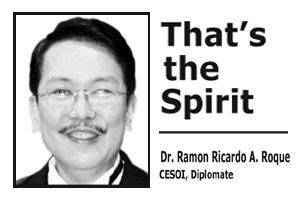WHAT is really the purpose of the fare matrix issued by the Land Transportation Franchising and Regulatory Board (LTFRB) and is required to be prominently displayed in all public utility vehicles?
Given the recent decision of the LTFRB to increase the base fare (for the first four kilometers) for jeepneys and buses in Metro Manila, Central Luzon, and Southern Luzon, concerned public transport operators have to secure new fare matrix for their franchised route reflecting the approved fare increase.
Like in the past, there are several concerns about the implementation of the LTFRB’s policy on fare matrix. The main problem is about the difficulty in securing the matrix given the time public transport operators have to spend.
All these years, this has been a recurring problem.
While the LTFRB obviously has the information as to the number of public transport operators, the number of fare matrix that needs to be issued, and the time needed for the issuance of the same, the recurring problem simply means that the agency has not effectively adjusted the process for the issuance of the fare matrix.
The LTFRB rule that prohibits public utility vehicles from charging the increased fare rates and the problem on the issuance of fare matrix result in the loss of money particularly on the part of the drivers.
Given the current situation, the question that needs to be asked and that needs to be answered by LTFRB is: Is a new fare matrix really necessary given the fact that the fare increase is only for the base fare? Specifically, the new fare rates for jeepneys are simply R2 more than the old rates or R1 more than rates with the previously granted one peso provisional fare increase.
The fare matrix is clearly a mechanism that will guide operators, drivers, and passengers on what the approved rates are. The matrix is a deterrent for abuse of drivers in charging passengers more than what has been approved. It is thus a protection for passengers and commuters.
The same protection can still be enjoyed by the passengers even without the new fare matrix as the new fare rates are simply R1 higher than what they have been paying prior to the November effectivity of the fare increase.
What is the downside of simply giving such advice to the public instead of requiring a new fare matrix?
LTFRB and all other agencies of the government should not implement policies simply for the sake of implementing them. Government agencies should always implement policies to serve the public good that such policy implementation should result in. Policies, including their implementation mechanisms should be adjusted, if needed, to serve the intended purpose.



